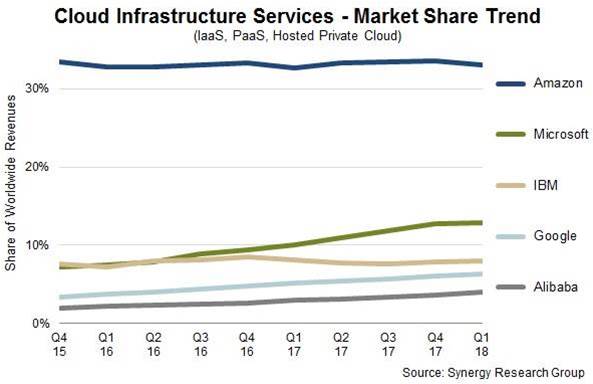Recently filed documents offer a glimpse into Amazon Web Services' meteoric rise in Australia since the company opened its first Sydney data centre in 2012.
Annual reports lodged with corporate regulator ASIC show that local entities associated with AWS – which is typically guarded about its Australian operations – have grown significantly.
Two companies in particular provide insight into the Australian operations: Amazon Corporate Services Pty Ltd and Amazon Web Services Australia Pty Ltd.
Amazon Corporate Services, whose principal activity was "the provision of data hosting services to related parties", had 247 employees in 2017.
According to an earlier filing, the company provides "marketing-related services to Amazon Web Services" as well as owning and operating "technology infrastructure equipment that is maintained in collocated centres and used to support and facilitate the delivery of AWS services".
Amazon Corporate Services turned over $25.7 million in 2012, the same year AWS opened its first Australian data centre.
Fast-forward to the 2017 financial year, and Amazon Corporate Services reported revenue of $375 million – growing by 14 times in five years.
The company had assets of $692.3 million in 2017 – $504.1 million of which was property, plant and equipment.
Amazon Corporate Services' biggest costs were $35.8 million in salaries, $84 million in occupancy costs and $169.9 million in depreciation. It paid taxes of $5.3 million and had a net profit of $4.9 million.
The company did not respond to CRN's requests for comment.
Amazon Web Services Australia
CRN has also analysed the annual report of another entity, Amazon Web Services Australia, which was established in 2015. The company provides "marketing, training and professional services to both third parties and related parties".
Amazon Web Services Australia, which had 482 staff, has grown revenue by close to six times in just two years.
It reported $31.7 million revenue in 2015, its first year of trading, then quadrupled to $124.4 million in 2016 and then surged again to $189 million in 2017.
Both entities are owned by the same parent company, Amazon.com, Inc.
The company had assets of $83.6 million in 2017, of which just $15.3 million was property, plant and equipment.
Amazon Web Services Australia's biggest costs were salaries, bonuses and other employee entitlements, worth $157.9 million. It paid taxes of $3.6 million and had a net loss of $8.4 million.
To put Amazon's Australian performance in context, AWS had global revenues of approximately A$23 billion (US$17.5 billion) in 2017, growing 47 percent that year.
Although AWS was born in March 2006, Amazon only began divulging standalone financial data for the cloud business from 2015, when it turned over US$5 billion.
As for global market share, AWS had a four-year head start on its closest competitor, Microsoft Azure, and Amazon has maintained – even increased – its lead over rivals.
According to Synergy Research Group, AWS has a 33 percent share of the cloud infrastructure services market far outstripping the rest of the field.

Australian impact
AWS, whose Australia and New Zealand country manager is Paul Migliorini, has signed up a number of high-profile Australian customers and partners to relocate computing to the cloud.
NAB last month revealed the first details of an "elastic" data lake it has built on top of AWS, which it is calling 'discovery cloud'. Other major Australian enterprises that have migrated data to AWS include Visy, Origin Energy and News Corp.
Salesforce launched local availability zones in Australia last October, hosting its software-as-a-service in the AWS Sydney region.
Australian AWS partners include established channel players such as Datacom, Bulletproof and Melbourne IT, as well as a breed of born-in-the-cloud partners such as ITOC, base2Services and Versent.
AWS has also been the preferred public cloud partner of independent software vendors, including major Brisbane-based ISV TechnologyOne. AWS last year kicked off a hiring spree for channel roles focusing on recruiting more ISVs to its platform.




.png&h=142&w=230&c=1&s=1)
_(21).jpg&h=142&w=230&c=1&s=1)







.jpg&w=100&c=1&s=0)










